Good by Patrick and our first stratospheric balloon.
Temperature: minus 30 Celsius, minus 22F
Windchill: minus 44 Celsius, minus 47 F
Wind: increasing to 17 knots
Weather: Sunny, with a few hours overcast in the afternoon
I will answer the surface ozone photochemical question in my next journal because today we conducted the regular stratosphere ozone profile launch.
Finishing writing and sorting photos at 1:30 am, my Monday morning started at 6:30 am with posting journals during satellite hours and continued with meetings.
Before lunch we all went to the ski-way (runway) to say good by to Patrick. He is looking forward having skiing times with family and friends before he is going to Greenland to the Summit Station.
Patrick Cullis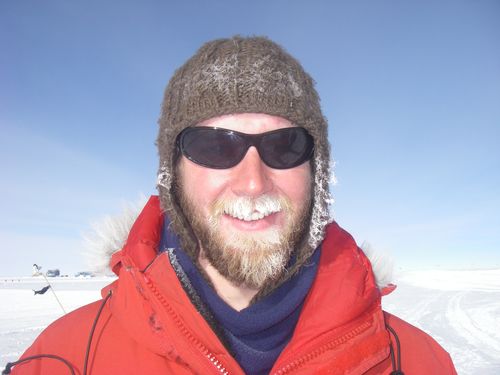
Good by! Patrick and Elke and the LC 130
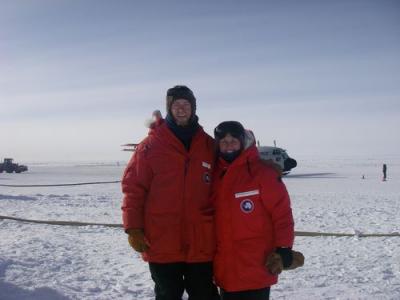
Patrick and other passengers are waiting near the ski-way to board the LC 130 ("Hercules" or "Herc")
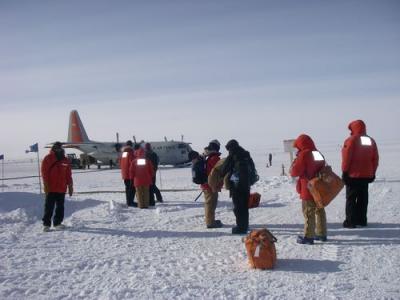
While passengers are ask to stand by, the last cargo is loaded
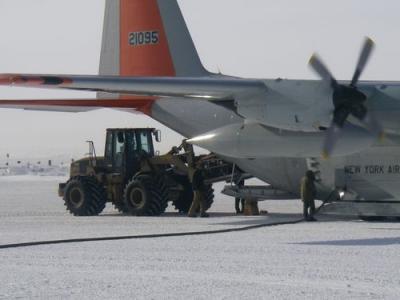
The flight attendant is standing by to instruct the passengers to walk to the plane.
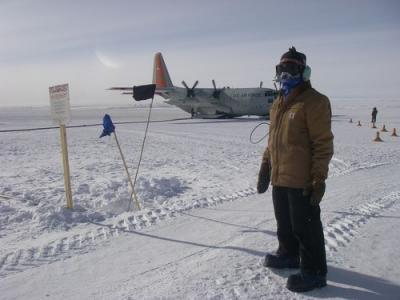
Passengers are boarded, skiies are down, the "Herc" is ready to take off.
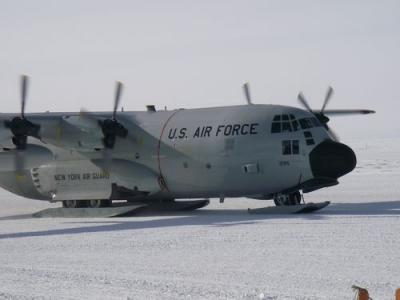
We all met at lunch and then it was time to prepare the ozonesonde for the stratosphere launch. All the preparations were done by 4pm and Bryan launched it in front of the BIF.
Amy Cox and Bryan Johnson are preparing the ozonesonde. Many steps are involved.
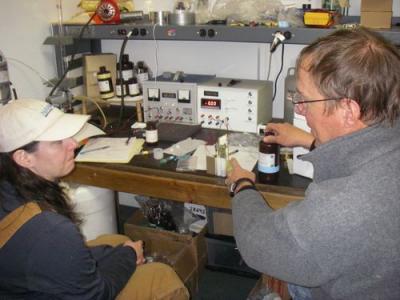
One step in the preparation is taking the flow rate to account for the air flow rate through the sonde. This is done by timing a soap bubble rising through a marked column while the sonde is running.
Amy is taking the flow rate
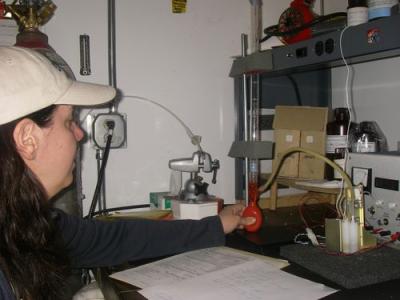
Elke is taking the flow rate: the average of 5 to 8 measurements is then calculated .
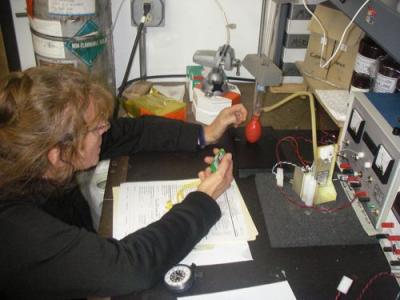
The ozonesonde is ready and Amy and Elke attaching the radiosonde that will transmit the data to the ground computer.
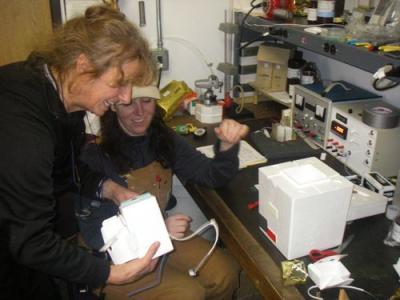
Next: Elke is carefully unrolling the balloon with a covered hand while Amy is giving instructions.
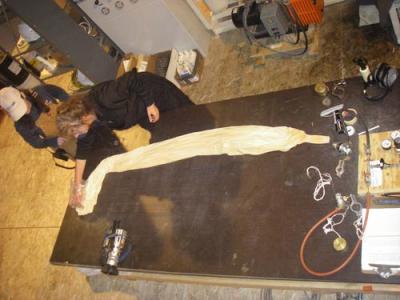
"The balloon is now ready to get attached to the helium tank", Bryan says.
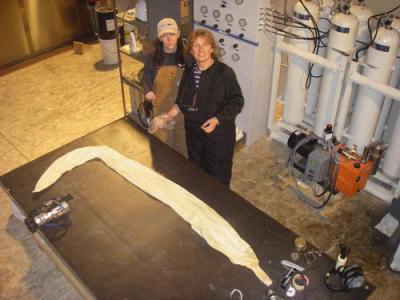
The stratosphere balloon is being filled with helium. Elke is directing the bolloon movement off the table with a gentle touch and a covered hand.
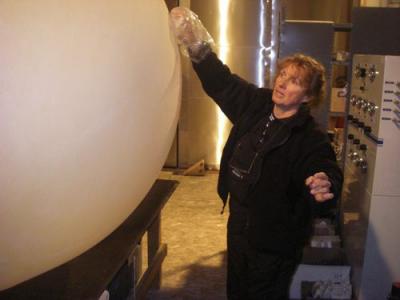
The weight attached to the valve is lifted by the balloon, signaling the correct amount of helium. Amy is turning off the helium walve.
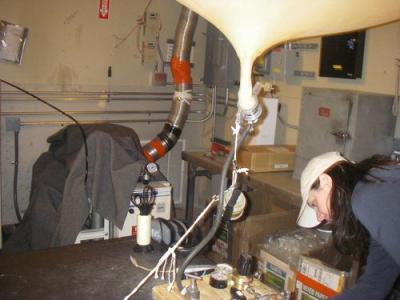
Elke is tying the knot to close the balloon so that the helium valve can be disconnected.
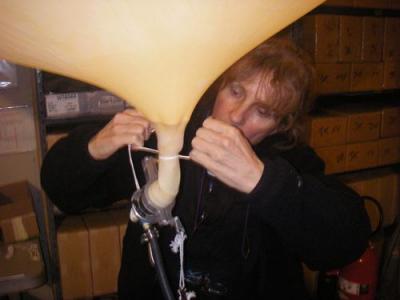
A double knot is better!!
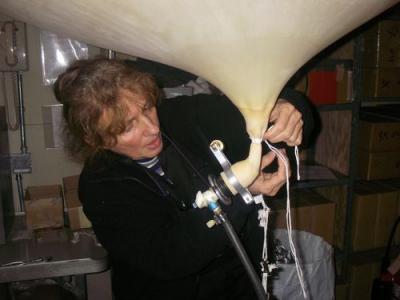
Elke is tying up the balloon with final knots.
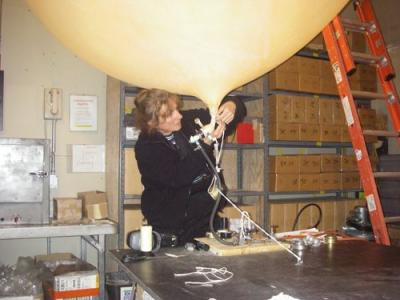
Elke is attaching the rope weel to the parachute. The weel will hold the ozone sonde.

Next: The ballon is ready for the ozonesonde attachment. Elke is holding the clip.
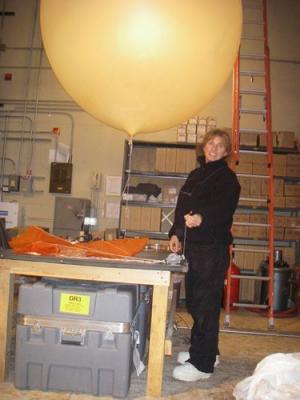
Before the ozonesonde is attached to the balloon, it is placed outside so it can read the outside surface ozone for a start comparison. Elke is holding the sonde in front of the BIF (Balloon Inflation Facility)
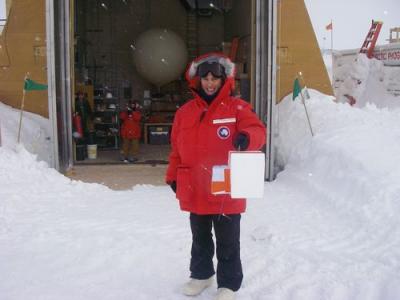
The ozonesonde container is attached. Bryan is carrying the balloon outside the BIF for the launch.
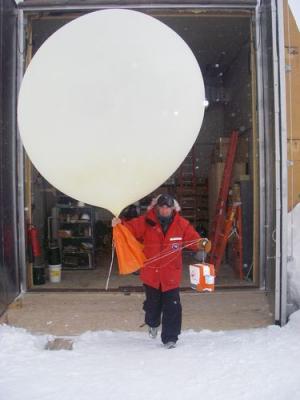
Bryan Johnson is launching the stratospheric balloon. This balloon will rise up to 35 kilometers. While the balloon rises , it will send the ozone data to the ground computer via radio-sonde. It will fly too far in order to retrieve the instruments but we will have the important data.
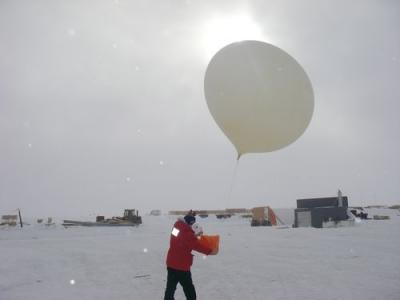
Weekly flights like this are conducted by the NOAA team at the South Pole and many other stations. During the ozone hole formation in the end of August, September and October , these procedures are done biweekly.
Amy and I observed the collection of the ozone data by the sonde on the computer. The balloon burst at 35 kilometer and then descended. We were done by 6:45 pm and made it just it in time to catch dinner (dinner hours are 5 pm until 7:30pm).
Tomorrow, we will continue with another pink surface ozone balloon launch, weather permitting. We call it surface balloon launch because the balloon will not rise further than 1 kilometer or 1000 meters, remaining in the troposphere.
Definition of the day: Photochemistry (sunlight interacting with gas molecules) is one of the key elements of the ozone dynamics. In other words: without sunlight we would not have an ozone layer

